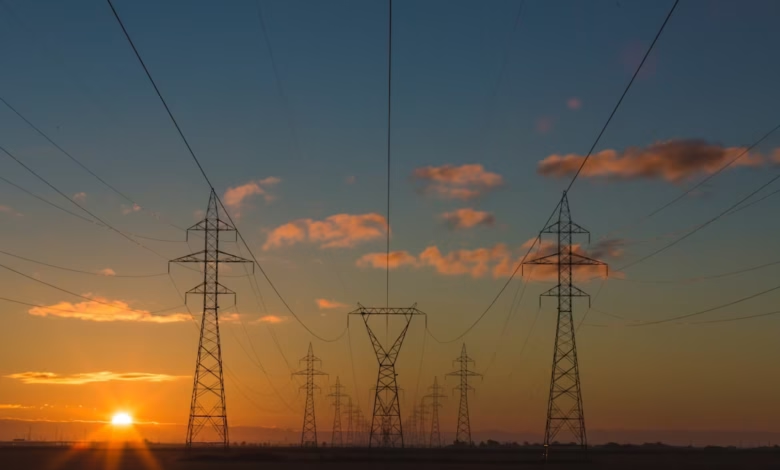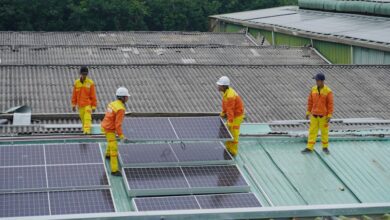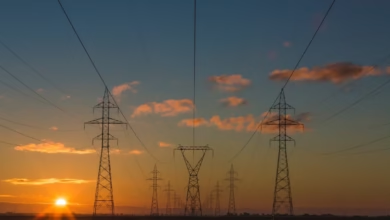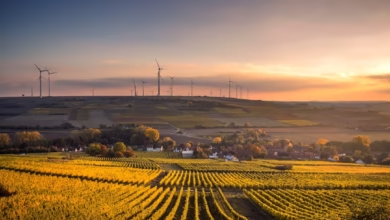Navigating Energy Markets: Trading, Pricing, and Innovations for a Sustainable Future in Renewable and Fossil Fuels

Energy markets are at the forefront of our transition towards a more sustainable and secure energy future. As the world grapples with the dual challenges of climate change and energy security, the trading and pricing of energy commodities—ranging from fossil fuels to renewable energy sources—has become increasingly complex and dynamic. Understanding these markets is crucial for investors, policymakers, and consumers alike, as they play a pivotal role in shaping global energy trends and investments.
In this article, we will explore the intricacies of energy markets, delving into the trading and pricing mechanisms of fossil fuels and renewable energy. We will examine the impact of energy policy on market dynamics, highlighting how regulations and incentives are pivotal in guiding investments in technologies such as solar power, wind energy, and hydrogen energy. Furthermore, we will discuss the latest innovations in energy storage and smart grids, which are essential for enhancing energy efficiency and supporting the integration of distributed energy resources. By analyzing these components, we aim to provide a comprehensive understanding of the evolving landscape of energy markets amid the global energy transition.
- 1. Understanding Energy Markets: Navigating the Trading and Pricing of Fossil Fuels and Renewable Energy
- 2. The Role of Energy Policy in Shaping Global Energy Trends and Investments
- 3. Innovations in Energy Storage and Smart Grids: Enhancing Energy Efficiency for a Sustainable Future
1. Understanding Energy Markets: Navigating the Trading and Pricing of Fossil Fuels and Renewable Energy
Understanding energy markets involves navigating the complex landscape of trading and pricing for both fossil fuels and renewable energy sources. As the world transitions towards cleaner energy options, the dynamics of energy markets are evolving significantly. This transformation is driven by global energy trends, energy policy initiatives, and the urgent need to address climate change.
Fossil fuels, including oil, natural gas, and coal, have historically dominated energy markets. Their pricing is influenced by various factors, such as supply-demand dynamics, geopolitical tensions, and energy exports and imports. However, as the global community increasingly acknowledges the environmental impact of carbon emissions, there is a growing shift toward renewable energy sources, such as solar power, wind energy, and hydropower. These alternative energy sources are becoming integral to energy security and sustainability.
The energy transition is characterized by the integration of renewable energy into existing energy markets. This transition requires innovative solutions, such as energy storage technologies, smart grids, and energy efficiency measures, to manage the intermittency of renewable sources. For instance, energy storage systems play a crucial role in balancing supply and demand, ensuring that energy generated from solar and wind resources can be utilized effectively.
In addition to traditional renewable sources, emerging technologies like hydrogen energy and bioenergy are gaining traction. These innovations contribute to the diversification of energy portfolios and enhance energy economics by providing more options for energy transportation and utilization. Furthermore, nuclear energy remains a significant player in the energy markets, offering a stable and low-carbon alternative to fossil fuels.
Energy R&D is essential for driving these innovations forward, fostering advancements in carbon capture technologies, and enhancing the overall efficiency of energy systems. As countries invest in distributed energy resources and electric vehicles, the interconnectedness of energy markets becomes increasingly important.
As we navigate this complex landscape, understanding the implications of energy investments and the role of energy policy is vital. By aligning market strategies with the goals of the energy transition, stakeholders can contribute to a sustainable and resilient energy future. Embracing these changes not only supports the fight against climate change but also opens up new opportunities in the evolving energy markets.
In summary, the trading and pricing of energy commodities are inextricably linked to the broader themes of energy security, environmental sustainability, and economic viability. As the shift toward green energy continues, stakeholders must adapt to the changing landscape to thrive in this dynamic market environment.
2. The Role of Energy Policy in Shaping Global Energy Trends and Investments
Energy policy plays a critical role in shaping global energy trends and investments, influencing everything from the types of energy sources utilized to the technologies that drive energy efficiency and innovation. Governments and international organizations develop energy policies to address key issues such as climate change, energy security, and the transition to renewable energy. These policies not only dictate the regulatory framework for energy markets but also encourage or discourage investments in various energy sectors.
As the world moves toward a more sustainable future, energy policy has increasingly focused on promoting renewable energy sources such as solar power, wind energy, and hydropower. This shift is essential for reducing dependence on fossil fuels and mitigating the impacts of climate change. Investment in renewable energy technologies and infrastructure has surged, fueled by policies that provide incentives for clean energy development and deployment. For instance, tax credits and subsidies for solar and wind projects have led to significant growth in these sectors, attracting both private and public investments.
Moreover, energy policy is pivotal in advancing energy storage solutions and smart grid technologies, which are crucial for integrating variable renewable energy sources into the existing energy markets. By supporting R&D in energy innovations, governments can enhance energy efficiency and reliability, creating a more resilient energy system. This includes investments in thermal energy, hydrogen energy, and bioenergy, which are becoming increasingly relevant in the context of an energy transition aimed at achieving net-zero emissions.
The global landscape of energy markets is also influenced by policies that govern energy imports and exports. Countries rich in fossil fuels may seek to maintain their market share while transitioning to more sustainable energy practices. This necessitates a careful balance—ensuring energy security while promoting investments in green energy initiatives and carbon capture technologies.
In summary, energy policy serves as a cornerstone for shaping global energy trends and investments. By prioritizing renewable energy, enhancing energy efficiency, and fostering innovations in energy storage and transportation, policymakers can guide the energy transition effectively while addressing the challenges posed by climate change and energy demand. The future of energy markets will depend significantly on how these policies evolve and adapt to emerging trends and technologies.
3. Innovations in Energy Storage and Smart Grids: Enhancing Energy Efficiency for a Sustainable Future
The rapid evolution of energy markets is heavily influenced by innovations in energy storage and the development of smart grids, both of which play critical roles in enhancing energy efficiency and promoting a sustainable future. As we transition from traditional fossil fuels to renewable energy sources, such as solar power, wind energy, and hydropower, the need for efficient energy storage systems becomes paramount. These systems allow for the effective management of energy supply and demand, ensuring that excess energy generated during peak production times can be stored and utilized when demand rises.
Energy storage technologies, including batteries and pumped hydro storage, are vital in stabilizing the grid and enhancing overall energy security. They support the integration of intermittent renewable energy sources by providing backup during low production periods. This is particularly important as global energy trends indicate an increasing reliance on green energy and a shift towards decentralized energy production. Distributed energy systems empower local communities to generate their own electricity, reducing dependence on centralized fossil fuel sources and improving energy resilience.
Smart grids represent another significant innovation in modern energy infrastructure. By utilizing advanced communication technologies and data analytics, smart grids optimize energy distribution, enhance reliability, and facilitate the integration of various energy sources, including nuclear energy and bioenergy. These grids allow for real-time monitoring and management of energy flow, enabling utilities to respond swiftly to changes in energy demand and supply, thus minimizing waste and improving energy efficiency.
Moreover, the intersection of energy storage and smart grid technology is crucial for the advancement of electric vehicles (EVs) and hydrogen energy solutions. As the adoption of EVs grows, the need for effective charging solutions and energy-efficient transportation becomes even more pressing. Innovations in energy R&D are focused on creating systems where EVs can not only draw energy from the grid but also supply energy back during peak demand, further enhancing energy economics and sustainability.
The ongoing energy transition necessitates robust energy policies that support the development of these technologies. By investing in energy storage solutions and smart grid infrastructure, countries can bolster their energy imports and exports, improve energy policy frameworks, and contribute to global efforts against climate change. Innovations such as carbon capture also play a key role in this transition, allowing for continued use of fossil fuels while mitigating their environmental impact.
In conclusion, the integration of energy storage and smart grid innovations is essential for enhancing energy efficiency and achieving a sustainable energy future. These advancements not only support the transition to renewable energy but also contribute to energy security and economic growth in the rapidly evolving energy markets. As we continue to explore and invest in these areas, the potential for a cleaner, more efficient energy landscape becomes increasingly attainable.
In conclusion, the dynamics of energy markets play a crucial role in the trading and pricing of both fossil fuels and renewable energy. As we navigate through an era marked by significant energy transition, understanding the interplay between energy policy and global energy trends becomes increasingly vital. Innovations in energy storage and smart grids not only enhance energy efficiency but also pave the way for a sustainable future, allowing for the integration of diverse energy sources such as solar power, wind energy, hydropower, and bioenergy.
The emphasis on energy security and the need for robust energy investments are essential to support the ongoing shift towards green energy. As we witness advancements in carbon capture technologies and the rise of hydrogen energy, it is clear that the energy economics landscape is evolving. The importance of distributed energy systems, coupled with the electrification of transportation through electric vehicles, signifies a comprehensive approach towards addressing climate change challenges.
Looking ahead, continued focus on energy R&D and innovative solutions will be paramount in ensuring a resilient energy market that meets both current and future demands. By fostering collaboration across sectors and prioritizing sustainable practices, we can effectively respond to the complexities of energy imports and exports, while remaining committed to achieving a greener and more sustainable energy future.





